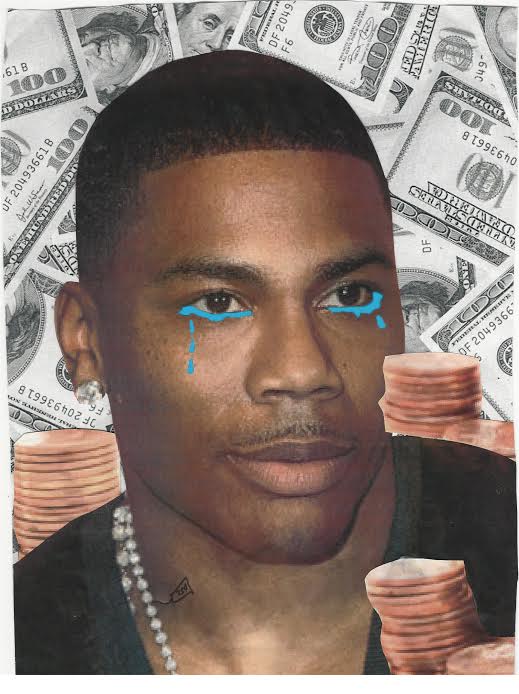Tragedy has struck one of the most prominent musicians featured on middle-school dance playlists. Nelly—proud wearer of Air Force Ones and Band-Aids—reportedly owes the Internal Revenue Service (IRS) over $2.4 million USD in unpaid taxes since 2013 and an additional $150,000 to the state of Missouri, according to a leak from TMZ. Brian Josephs, writer for Spin, calculated that to help clear Nelly’s debt, fans would have to collectively stream “Hot in Herre” a total of 287,176,547 times. Through social media platforms, such as Twitter and Facebook, the #HotinHerreStreamingParty had thousands of loyal fans express their concern for Nelly by streaming the song.
It’s important to support the arts and up-and-coming artists in the music industry; however, it’s also vital for artists to prepare themselves for the changing methods of music sharing. Over the past few years, streaming websites such as Spotify have been criticized for the payout received by artists. For each song played, the musician earns only a fraction of a cent, specifically between $0.006 and $0.0084. Comparing inexpensive monthly subscriptions to individually purchasing a song for $1.29, the choice seems obvious for many music-listeners. Thus, a majority of millennials choose to subscribe to a streaming service. The #HotinHerreStreamingParty is an interesting byproduct of the battle between musicians and music streaming platforms. Some artists insist that streaming services can damage their careers, yet others insist that adapting to changing methods of music sharing is vital to achieve success.
For instance, Chance the Rapper, an American musician taking the industry by storm, is climbing higher and higher up the charts despite not charging for his music. The artist behind Coloring Book releases his mix tapes for free on social media platforms, preferring to make his money through touring instead of album sales. Chance the Rapper recognizes that his audience is a part of the generation raised on torrenting their music from sites such as LimeWire or Video-to-MP3. In a Rolling Stone interview, he described signing to a label as “a dead industry.” Rather than desperately holding on to that old system, he looks to the future.
On the other side of the controversy stands ten-time Grammy winner Taylor Swift. She has publicly taken a stance against Spotify, arguing that she doesn’t agree with their method, as the model threatens struggling artists that depend on music purchases for a living wage. While some artists, including herself, have had enough success to not be significantly impacted by this sharing system, many musicians barely receive payout for their work played on streaming services.
This debate brings us back to the #HotinHerreStreamingParty movement. The aging artist struggles to pay off his debts, one can’t help but notice the prodigious amount of song plays needed to reach the fundraising goal. For someone like Nelly, who has been producing and releasing music for almost two decades, it seems almost unfair that consumers get unlimited streaming of his songs while he receives such a miniscule payout. As a budgeting college student, however, the idea of paying for each song individually rather than paying only $10 a month for limitless music is less than ideal.
Until the debate over streaming sites is resolved, all that can be done for the cause is to jump on board with Nelly’s streaming party. Streaming rather than purchasing individual songs has become the dominant form of music sharing. Understanding this, an individual playing Nelly’s biggest hits may have little effect, but if enough fans band together, streaming may actually be an avenue for salvation. So, get out your speakers, log on to Spotify, and get ready to listen to “Hot in Herre,” one of the most musically advanced songs of the century. It’s time to #SaveNelly.








